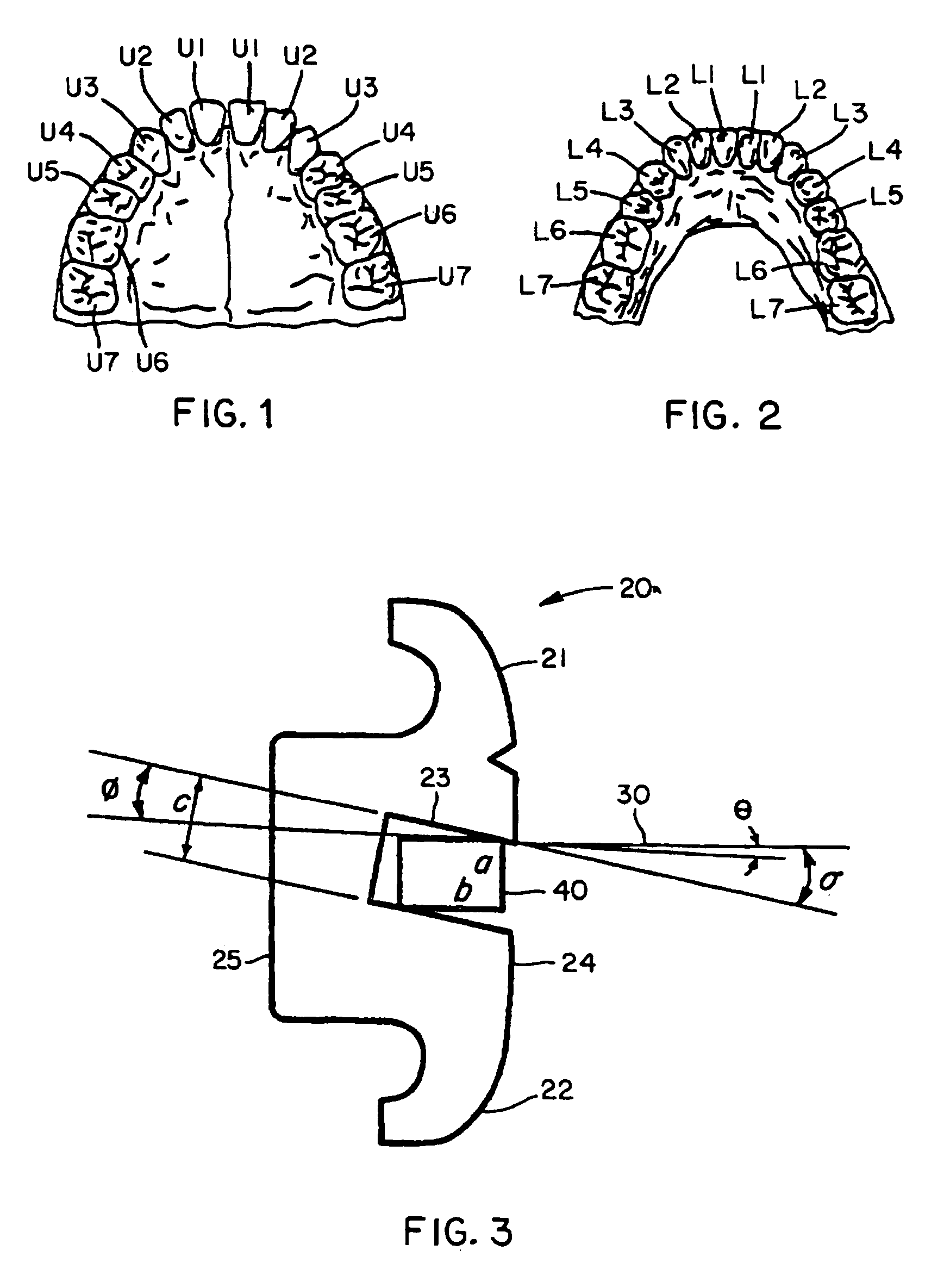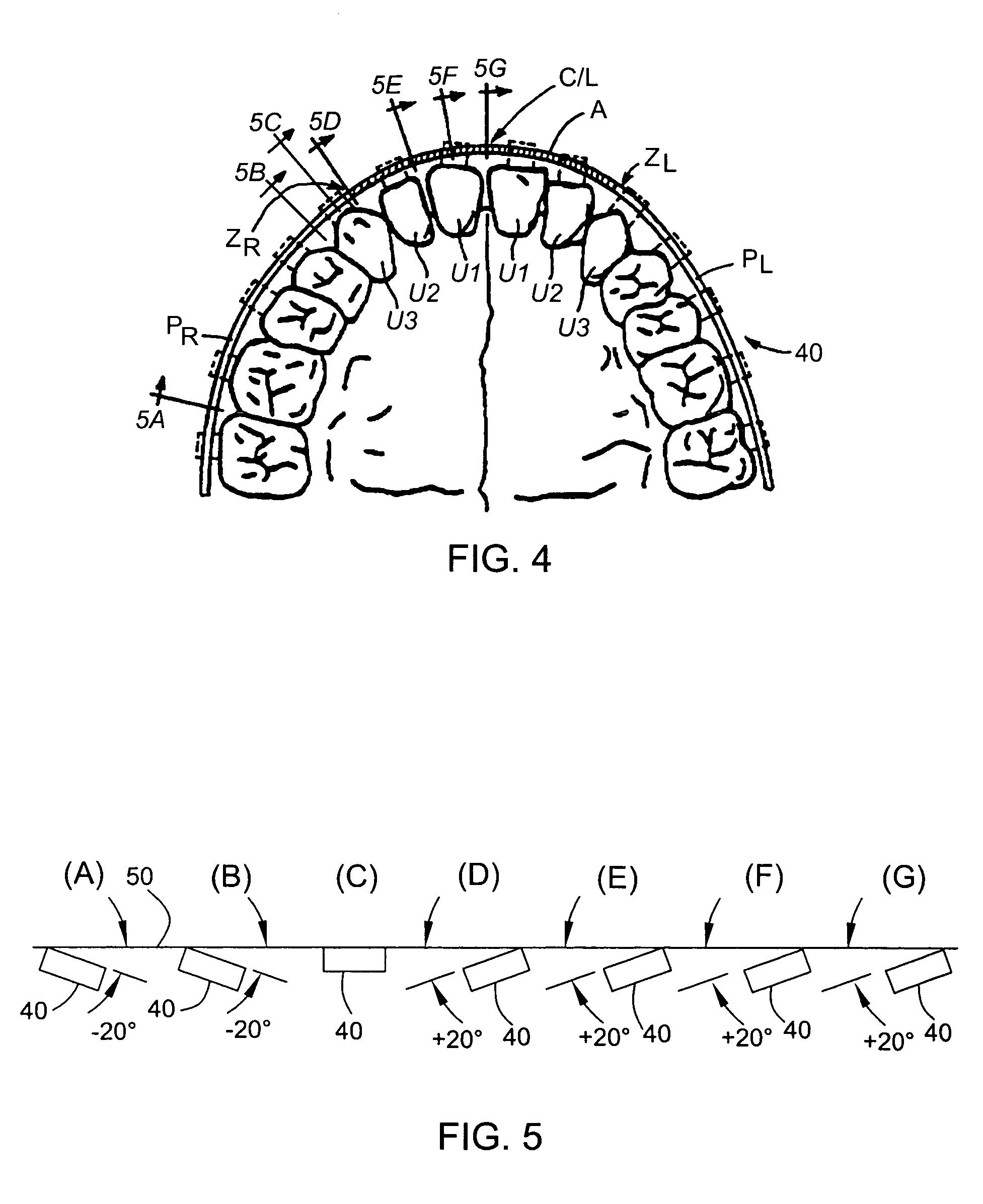Torqued titanium-based archwire
a titanium-based archwire and torque technology, applied in the field of orthodontic systems and appliances, can solve the problems of inability of orthodontists to manually bend torque into titanium-based archwires, high force and low shape memory of stainless steel, and achieve the effect of greater shape memory and more biocompatibl
- Summary
- Abstract
- Description
- Claims
- Application Information
AI Technical Summary
Benefits of technology
Problems solved by technology
Method used
Image
Examples
Embodiment Construction
[0025]Turning now to the drawings and referring first to FIG. 1, there is shown a set of upper (maxillary) permanent teeth, including central teeth (labeled U1), lateral teeth (U2), cuspids (U3), first and second bicuspids (U4 and U5), and first and second molars (U6 and U7). Similarly, FIG. 2 illustrates a set of lower (mandibular) permanent teeth, including central teeth (labeled L1), lateral teeth (L2), cuspids (L3), first and second bicuspids (L4 and L5), and first and second molars (L6 and L7). The centrals and laterals, whether upper or lower, are known collectively as the anteriors.
[0026]The present invention relates to preadjusted orthodontic bracket systems and methods for straightening upper and lower permanent teeth. More specifically, this invention is related to torque, which is also known to orthodontists as inclination or third order bends. Torque inclination is illustrated in FIG. 3. As is well known, an orthodontic bracket 20 includes tie wings 21, 22 and is formed ...
PUM
 Login to View More
Login to View More Abstract
Description
Claims
Application Information
 Login to View More
Login to View More - R&D
- Intellectual Property
- Life Sciences
- Materials
- Tech Scout
- Unparalleled Data Quality
- Higher Quality Content
- 60% Fewer Hallucinations
Browse by: Latest US Patents, China's latest patents, Technical Efficacy Thesaurus, Application Domain, Technology Topic, Popular Technical Reports.
© 2025 PatSnap. All rights reserved.Legal|Privacy policy|Modern Slavery Act Transparency Statement|Sitemap|About US| Contact US: help@patsnap.com



